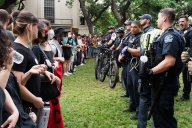You have /5 articles left.
Sign up for a free account or log in.
More institutions now have chief diversity officers than ever before. But how do institutions make decisions surrounding these new offices? A new qualitative study of two large unnamed research-intensive universities to create these positions finds they were “structural” responses to what are really “cultural” issues and related crises. The study recommends that universities assess campus climate in appointing chief diversity offices, and that those findings inform the way the particular campus office works. The study further recommends that researchers empirically address “social identity when examining chief diversity officers and to further investigate job and work attitudes, such as organizational commitment or burnout, in these leaders.”
A second study co-written by Eugene T. Parker, assistant professor of higher education administration at the University of Kansas, who wrote the diversity officer study, relates to what kinds of faculty-student interaction make students feel welcome on campus. The study drew on data from the 2014 Student Experience in the Research University Consortium survey. It found that communicating with a professor by email or in person, experiencing equitable and fair treatment by professors, and having access to faculty members outside class were all positively associated with positive perceptions of the climate for diversity. Engaging in creative work, research or non-course-related activities were negatively associated with perceptions of the climate for diversity, however, as were talking with a faculty member outside of class about issues and concepts derived from a course, and knowing a professor well enough to ask for a recommendation letter. The study suggests these findings could be moderated by students’ race, gender or social class.









